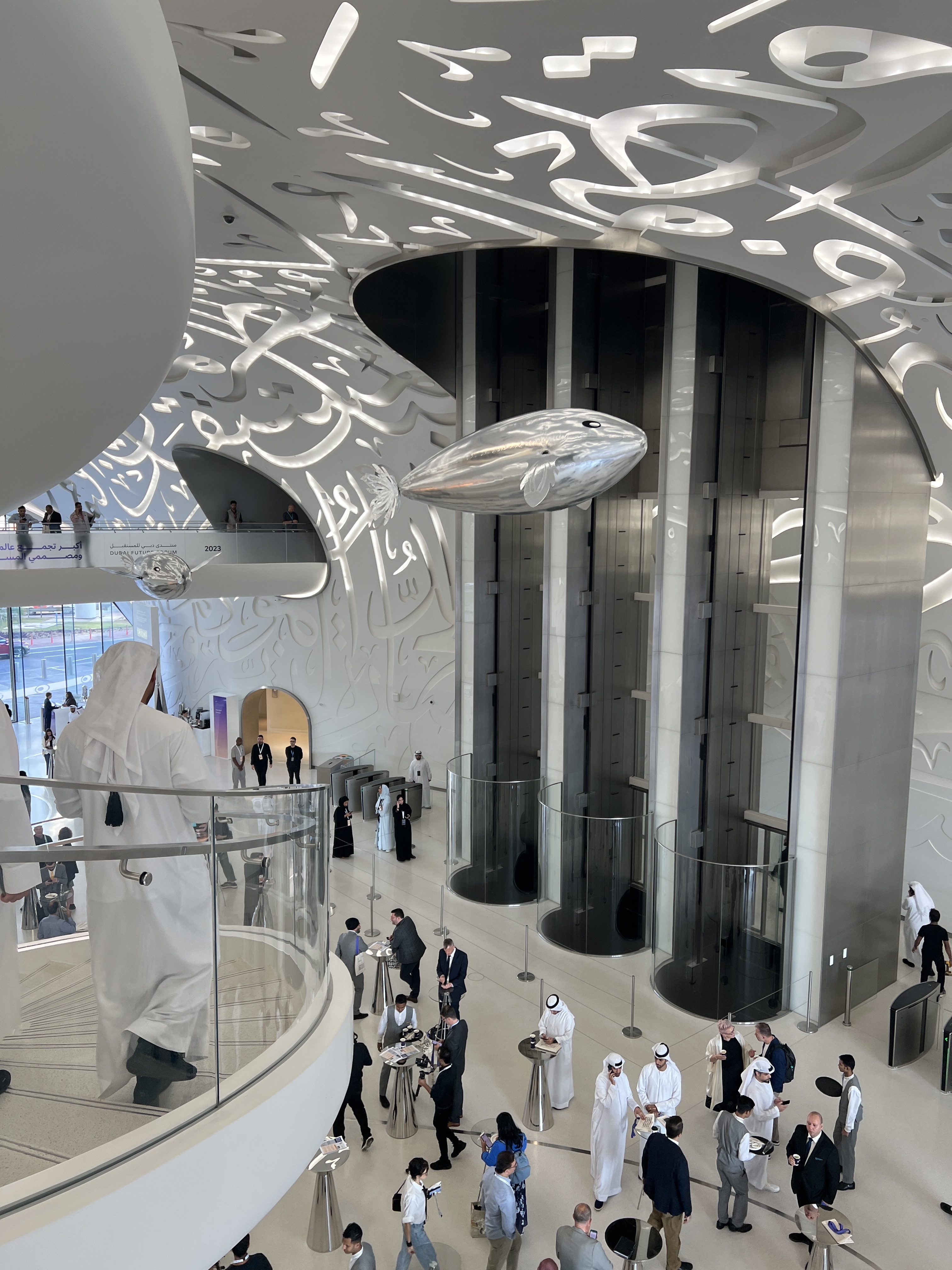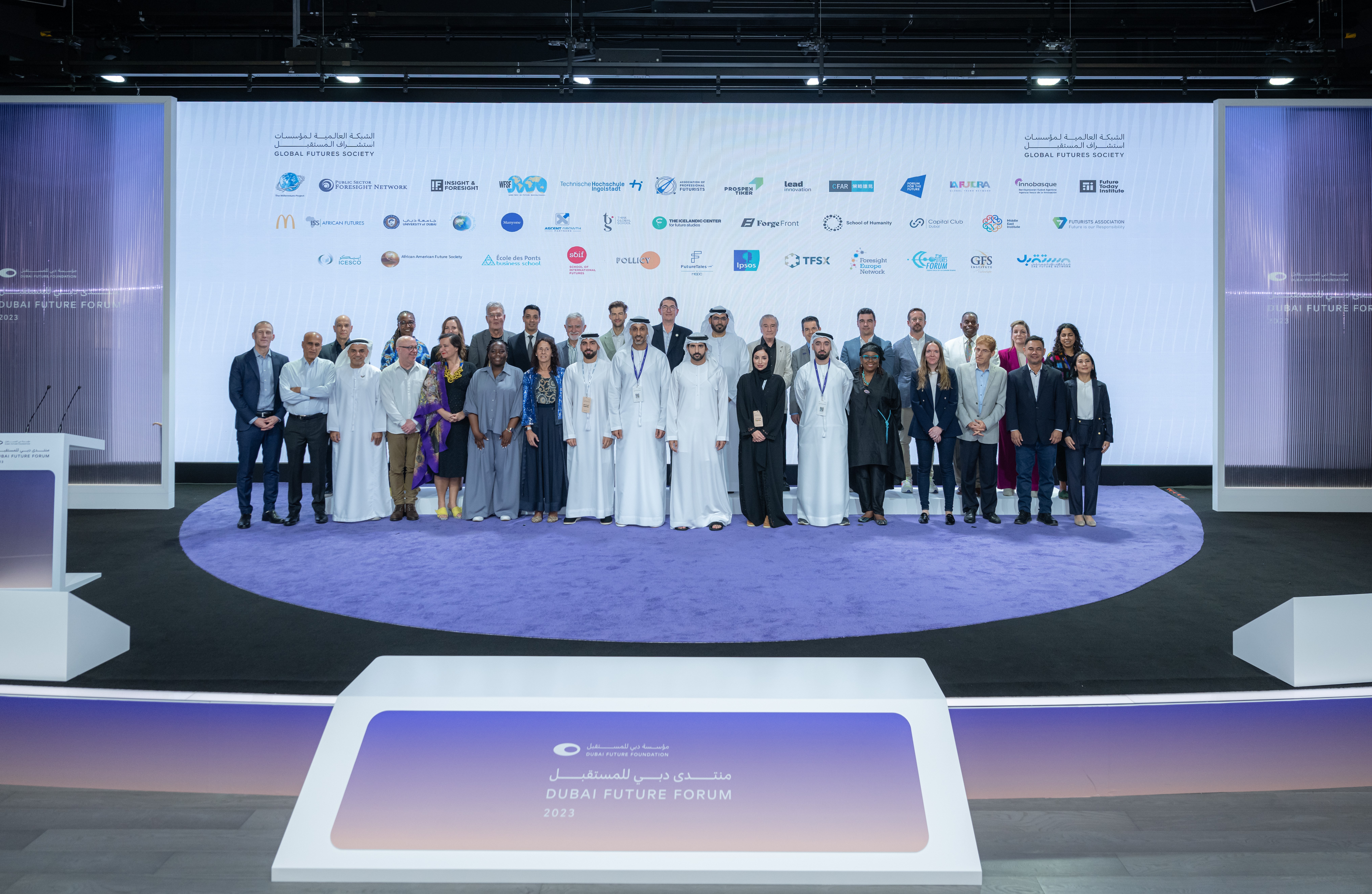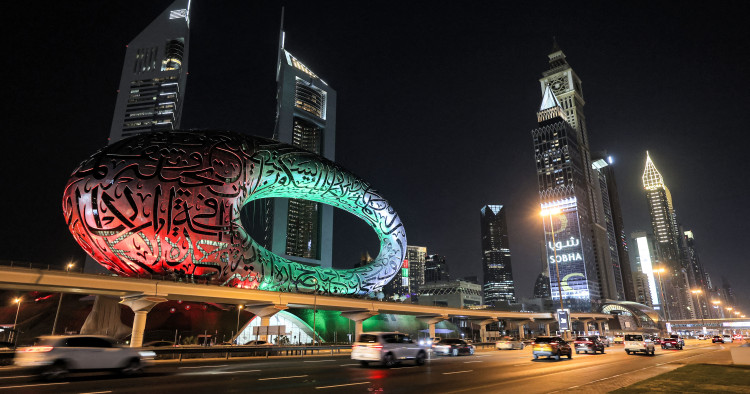Two weeks ago, I had the privilege of joining more than 800 fellow futurists, and another 1,500 “futures-adjacent” collaborators, at the second annual forum convened by the Dubai Future Foundation. Arriving with high expectations, I left even more enthused than I’d anticipated, and with invaluable new learning from those around me. Here are some of the highlights that will fuel the work we’ll do next year and beyond as part of the Middle East Institute’s Strategic Foresight Initiative program.
Diversity, “locality,” and youth
Futurists from more than 100 countries shared their perspectives and their work over these two days. A great many of them hailed from the Middle East and North Africa — the United Arab Emirates, Egypt, Lebanon, Oman, Morocco, Jordan, Iran, Saudi Arabia, and elsewhere across the entire region. As noted by European and North Atlantic Treaty Organization (NATO)-affiliated futurist Florence Gaub, increasingly the most thoughtful and insightful work on the futures of the region is being done in the region, rooted in vital ways in the cultures of all its countries and peoples.
We’re eager to draw even more of these individuals into our futures work at MEI than we already have, as well as other futurists and change-makers from throughout Africa, Asia, and other parts of the world with whom we were fortunate to engage at the Forum.
The future was also well represented at the Forum in a generational sense. Dozens of fellows and network members from the exceptional Next Generation Foresight Practitioners program shared their work and their energy. UNICEF debuted its Youth Foresight Playbook — a toolkit for engaging young people in foresight to help give them an authentic seat at the table in decision-making spaces that are creating the futures they’ll live and lead in. The mix of those invited to attend the Forum, and the mix of speakers on nearly every panel, recognized the younger generations of what I’ll call foresight “act-itioners” as true leaders driving this work we do.
We’ll continue here at MEI to engage with them, both to give them an additional platform and also to learn from them. One of our aims is to co-create a MENA Region Intergenerational Fairness Dialogue platform where they can work as “futurist policymaking entrepreneurs,” a phrase used in one panel by Karthick Ramakrishnan, co-founder of the futures initiative California 100.

Making it about who people are
One of the most valuable sessions I attended focused on making futures connect with people on a personal level, so they feel empowered to be part of that work, voicing what they want those futures to be like. Radha Mistry, a strategic foresight leader at the sustainable design and engineering firm Arup, described how we often in strategic foresight talk about drivers of change, like “rising sea levels,” at a mass scale. Framed that way, it’s difficult for people to tap into what it might mean for them as individuals, or members of a family or a culture, to live in a future shaped by these forces.
Our framing instead must come from making the people for whom and with whom we’re imagining futures top of mind in our work. Radha talked about the importance of creating emotional engagement. Macy Siu from futures advisory company From Later described ways to evoke what different futures feel like, not just what they look like. Other sessions explored decolonizing futures, and the roles that cultures and their heritage must play in making futures inclusive. These are powerful ideas that we want to have as north stars in our work in MEI’s Strategic Foresight Initiative.
Love, power, and justice
Adam Kahane, director of Reos Partners and a pioneer in bringing people together to turn intractable problems into positive futures, closed the first day with a powerful keynote. He talked about futures as a means for stakeholders with deep differences to explore their drives for valuing the unity of the whole (love), pursuing individual interests (power), and addressing real and perceived unfairness (justice).
Everyone on every side of our world’s pressing social, environmental, economic, and other challenges has these innately human drives and struggles with the tensions between them. Our job as futurists is not to obscure these tensions in rose-colored-glasses scenarios. It’s to provide the safe space where those who need to can work together to imagine alternative futures where they succeed in the difficult work of balancing among them.

Global Futures Society
At the forum, MEI was honored to be welcomed by His Highness Sheikh Hamdan bin Mohammed bin Rashid, Crown Prince of Dubai, to join 35 other institutions from 17 countries in the Global Futures Society (GFS). GFS is a network of organizations coordinated by the Foundation to work together on projects to explore and create positive futures. This collaboration will be a central and valued part of the impact that our Strategic Foresight Initiative program will have in 2024 and beyond.
Steven Kenney is the Director of the MEI Strategic Foresight Initiative at the Middle East Institute. He is also the founder and principal of Foresight Vector, a futures and strategy consultancy.
Photo by GIUSEPPE CACACE/AFP via Getty Images
The Middle East Institute (MEI) is an independent, non-partisan, non-for-profit, educational organization. It does not engage in advocacy and its scholars’ opinions are their own. MEI welcomes financial donations, but retains sole editorial control over its work and its publications reflect only the authors’ views. For a listing of MEI donors, please click here.













